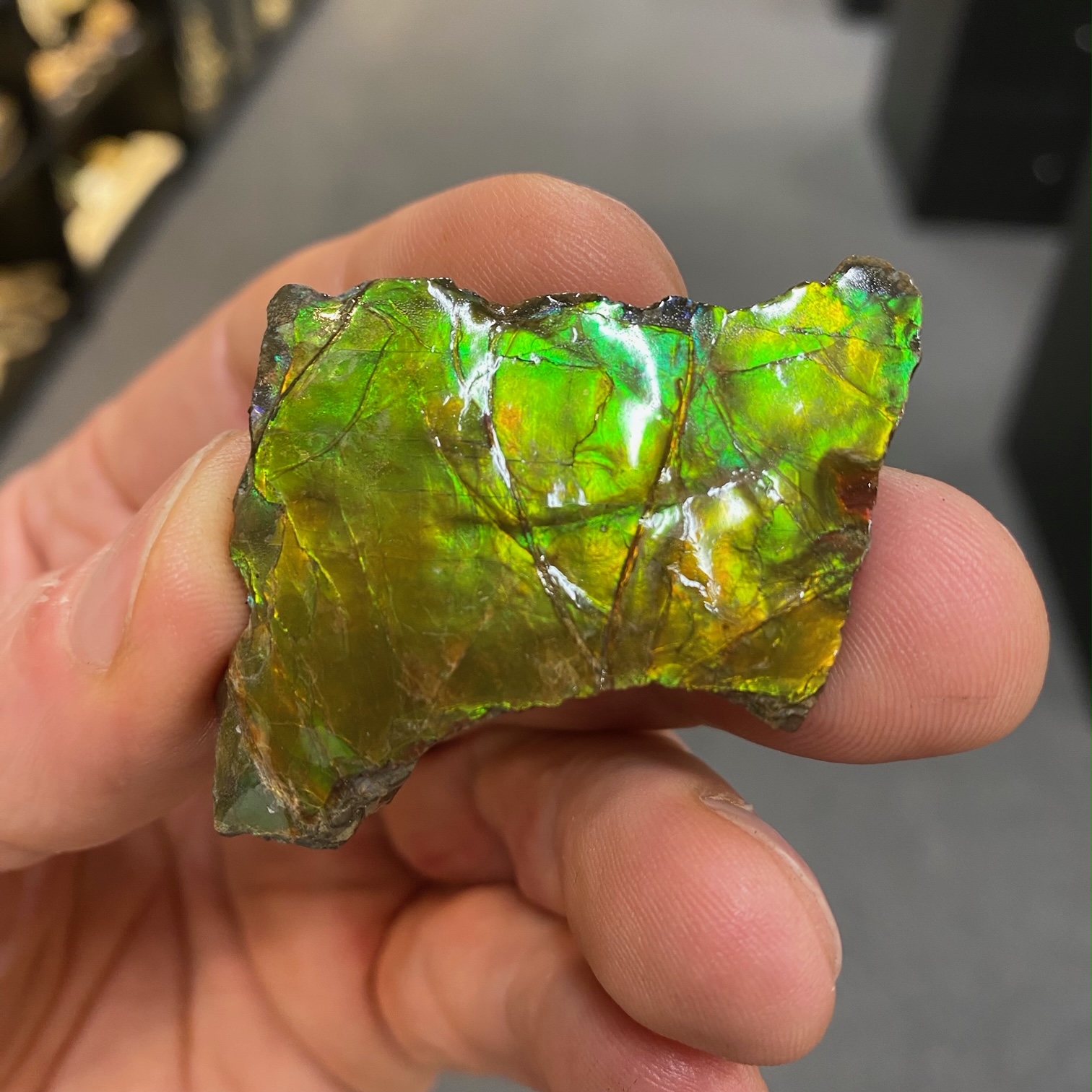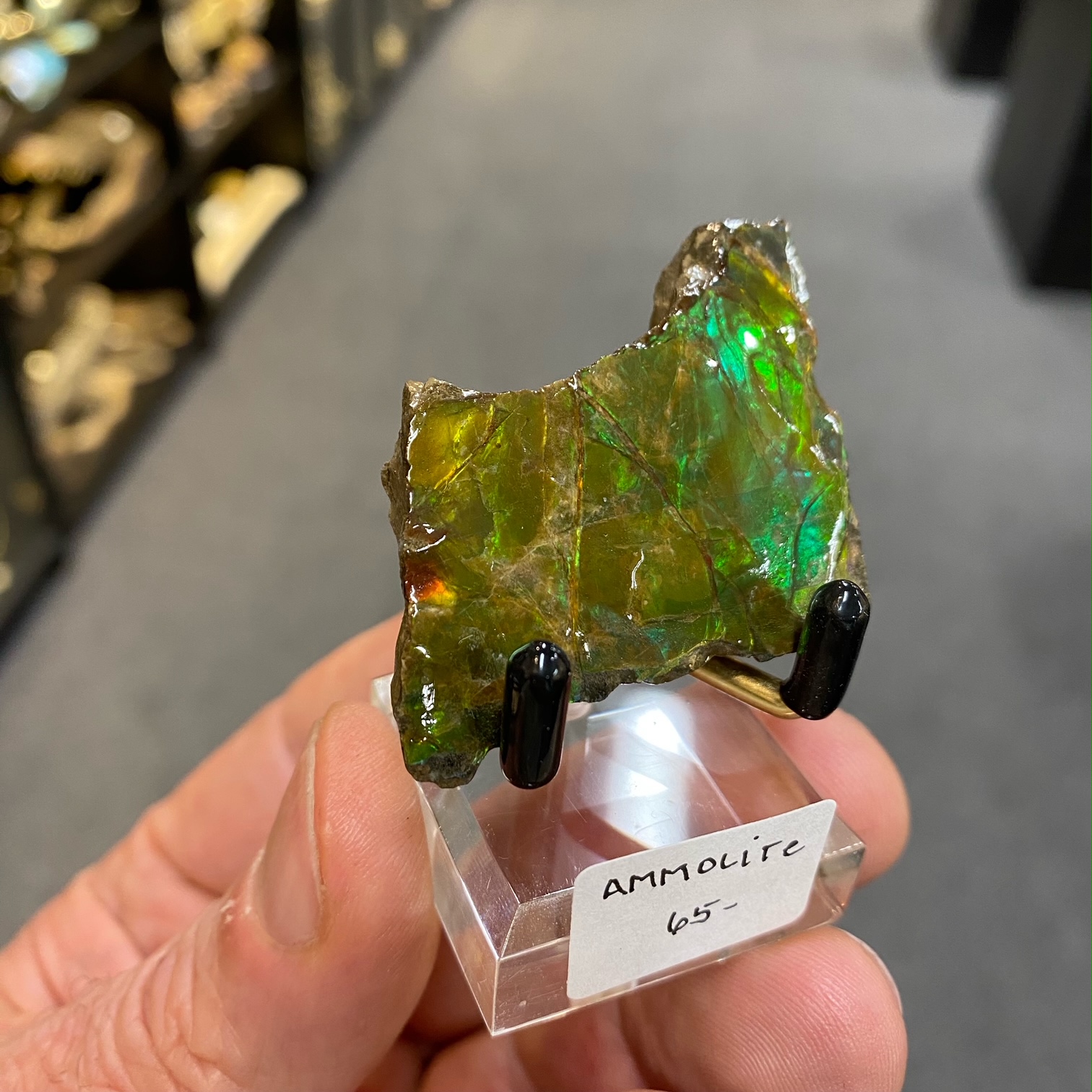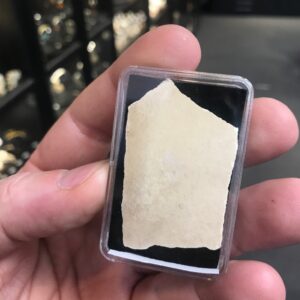Description
mmolite specimen from Alberta.
You will receive this exact specimen, Ammolite specimen Alberta #2. A fossil from the shell of an Ammonite that lived 70 to 100 million years ago.
Ammolite is a rare and beautiful gemstone found primarily in the region around **Alberta, Canada**. It is known for its vibrant, iridescent colors that can range from reds, greens, blues, and purples, often displaying a “play of color” similar to opal. This gemstone is made from the fossilized shells of **ammonites**, an extinct group of marine mollusks that lived around 70 to 100 million years ago during the Cretaceous period.
The **rock formations** where ammolite is found are located primarily in the **Alberta Badlands**, especially around the **Rocky Mountain foothills** and the **St. Mary River area**. These areas have been extensively explored for ammolite, particularly around the town of **Lethbridge** and the **southern Alberta** region.
### Key Facts About Ammolite:
1. **Origin**: Ammolite is primarily found in Alberta, Canada, particularly in the foothills of the Rockies.
2. **Formation**: It forms from the fossilized shells of ammonites, which were marine animals. Over millions of years, the shells have undergone a process of mineralization, turning into gemstone-quality material.
3. **Color Play**: Ammolite exhibits iridescent colors, similar to opal, due to its unique mineral composition, including the presence of **aragonite** (a form of calcium carbonate).
4. **Rarity**: Because ammolite is only found in a specific region of the world, it is considered one of the rarest gemstones.
5. **Gemstone Use**: Ammolite is often used in jewelry, including rings, necklaces, earrings, and bracelets, valued for its striking beauty and natural patterns.
### Significance:
Ammolite is sometimes referred to as the **”gemstone of the dinosaur age”** because it comes from creatures that lived during the Mesozoic Era. It was designated as the official gemstone of **Alberta** in 2004, which helped raise its profile both within the province and globally. Alberta is now the primary source of ammolite in the world.
The **mining process** involves carefully extracting these fossils from sedimentary rock, a delicate task due to the fragile nature of ammolite. After being extracted, the pieces are cut, polished, and sometimes stabilized to create jewelry or collectible items.
### Economic and Cultural Importance:
Ammolite mining has contributed to Alberta’s economy, particularly for local communities near the mining sites. It also holds cultural significance, especially as a symbol of Alberta’s ancient past and natural beauty. In the gemstone world, it is considered a valuable collector’s item due to its rarity and striking colors.
If you’re ever in Alberta, visiting the **Royal Tyrrell Museum** in Drumheller or the **Glenbow Museum** in Calgary might offer deeper insights into both the fossils and the unique gemstone created from them.
This listing is for Ammolite specimen Alberta #2.
Fossil, Tyrannosaurus rex fossilized Bone fragment artwork and description in a riker mount.

























